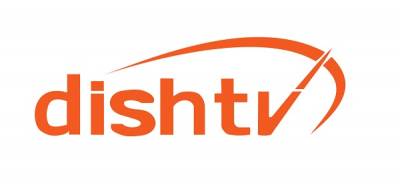Dish TV Q2 FY17 subscription revenues up 11.9%; net profit at Rs 701 mn
Dish TV India has reported 11.9 per cent Y-o-Y growth in its Q2 FY2016 consolidated subscription revenues at Rs 7,288 million, while operating revenues were up 9.6 per cent Y-o-Y at Rs. 7,793 million.
EBITDA for the quarter stood at Rs 2,642 million, compared to Rs 2,550 million in the corresponding quarter last fiscal. EBITDA margin stood at 33.9 per cent. Profit after tax was Rs 701 million.
Effective April 1, 2016, Dish TV harmonised the accounting of entertainment tax in line with industry practice. Prior to such change, entertainment tax was part of operating expenditure however it is now netted-off against subscription revenues. Q2 FY2016 figures have been regrouped accordingly to make them comparable.
Year-on-Year revenue growth was despite applicability of higher service tax rate of 15 per cent in the second quarter as against 14 per cent in the corresponding quarter last fiscal. Excluding the impact of higher service tax, the like-to-like revenue growth would have been higher.
During the quarter, Dish TV added 259,000 net subscribers, closing the net subscriber base of 15.1 million. Dish TV reported Average Revenue Per User (ARPU) of Rs 162 in Q@ FY17, as against Rs 161 in Q2 FY2016.
In line with its strategy to go full throttle in the High Definition market, Dish TV introduced a new HD scheme enabling customers to opt for a HD box over a Standard Definition by paying an additional Rs 120 to get the HD hardware. Subscribers can now get started with HD by subscribing to pre-designed HD ala-carte packs worth Rs 75 per month, in addition to their preferred standard definition package.
During the quarter, Dish TV added 32 new educational channels launched by the Ministry of Human Resource Development on its platform. These channels have been started to disseminate high quality educational content throughout the country and would be available to subscribers on the Dish TV and Zing platforms.
Commenting on the Q2 FY2017 results, Jawahar Goel, CMD, Dish TV, said, “Healthy subscriber additions led to 11.9 per cent Y-o-Y growth in subscription revenues. EBITDA margin was 33.9 per cent. Net profit for the quarter was Rs 701 million and positive Free Cash Flow was Rs 791 million.”
India is now the world’s fastest growing economy. With rising disposable income and an ever increasing number of digital pay-tv households, it is also perhaps the most compelling market, worldwide, for DTH services. With another almost 2.8 million subscribers added in the second quarter of fiscal 2017, DTH households in the country have crossed more than the 90 million mark at a gross level.
That said however, the second quarter of the fiscal is usually not the best for the DTH industry.
Goel elaborated, “Torrential rains in many parts of the country often force consumers to defer buying a new DTH connection while the existing ones may delay recharging if the going gets too tough. Both sales and recharge, however, normalise subsequently if the festival season hits early. Targeting Phase 3 & 4 markets, our subscriber additions during the quarter remained in-line with expectations.”
There was heightened regulatory activity within the Broadcasting and Distribution Services Sector in the last few weeks. Multiple draft orders; the draft Tariff Order, 2016, the draft Interconnection Regulations, 2016 and the draft Quality of Service and Consumer Protection Regulations, 2016 were released by the sector regulator seeking written comments from various stakeholders.
Expressing his views on the regulatory developments, Goel, said, “While the draft Regulations have been formulated with an intention of subscriber welfare, there are certain omissions, optimistic presumptions as well as unanswered questions that would hopefully be addressed once the final orders see the light of the day. We appreciate the spirit of transparency and non-discrimination that have been the guiding force behind these draft orders and hope that DTH would soon get the level playing field that it has been seeking. Restrictions placed on carriage fees should go a long way in correcting the industry macro environment.”
He further said, “We continue to remain positive about other regulatory interventions, including the proposed new license regime for the DTH sector and the impending nationwide roll-out of Goods and Services Tax (GST). The centre proposing 12 per cent and 18 per cent as the standard rates for majority of the taxable goods is a welcome step.”






Share
Facebook
YouTube
Tweet
Twitter
LinkedIn